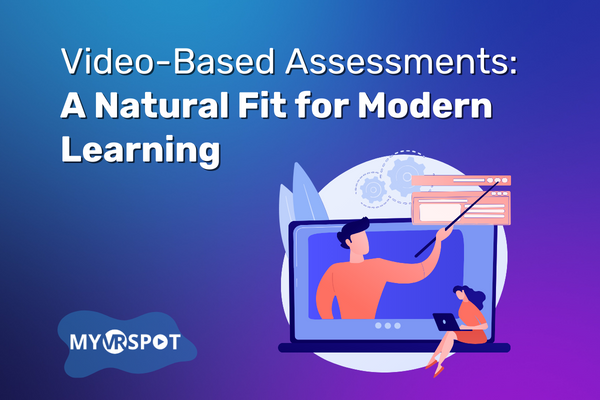
In today’s digital age, video has become the preferred medium for students to absorb content. Whether it’s a tutorial, a lecture, or a documentary, the power of video in capturing and retaining attention is undeniable. As education evolves, it’s only natural to harness this engaging medium for assessing students’ mastery of content. In this blog post, we explore the advantages of video-based assessments and why they are the perfect match for modern learners.
Captivating and Engaging
Video is a captivating medium that naturally draws in students. The combination of visuals, audio, and sometimes animation makes it more engaging than traditional text-based content. By embedding questions throughout a video, educators maintain students’ focus, turning what could be a passive experience into an interactive and stimulating one.
Real-World Context
Videos often present content in a real-world context. They showcase practical applications, real-life scenarios, and case studies. When students answer questions embedded in the video, they are not just regurgitating facts; they’re applying their knowledge to situations they might encounter in their academic or professional lives.
Active Learning
One of the keys to effective learning is active engagement. Video-based assessments provide this opportunity. As students watch the video, they’re not mere spectators but active participants in the learning process. They’re prompted to think, analyze, and reflect as they move through the video content.
Self-Paced Learning
Video-based assessments offer the flexibility for self-paced learning. Students can pause, rewind, and re-watch sections to ensure they understand the material before answering questions. This adaptability caters to different learning speeds and styles, fostering a more personalized learning experience.
Immediate Feedback
One of the standout advantages of video-based assessments is the instant feedback they provide. Students receive feedback immediately after answering a question or completing the video, enabling them to gauge their understanding and, if necessary, revisit specific sections for clarification. This timely feedback is crucial for self-assessment and self-improvement.
Enhanced Retention
Visual content tends to be more memorable. When questions are strategically inserted into videos, they reinforce key points, aiding in the retention of information. Students are not only assessed on their ability to recall facts but on their capacity to remember and apply what they’ve learned.
Real-Time Analytics
Video-based assessments often provide real-time analytics for educators. They can track which parts of the video are more challenging when it comes to comprehension, helping identify which sections might need additional clarification or reinforcement. This data-driven approach informs teaching strategies and content improvement.
Accessibility and Inclusivity
Video-based assessments can be made accessible to a diverse range of learners, including those with disabilities. They cater to different learning preferences, ensuring that every student has a fair opportunity to engage with the content and demonstrate their understanding.
21st Century Skills
In the digital age, the ability to engage with multimedia content is a valuable skill. Video-based assessments not only assess students’ content knowledge but also equip them with skills they’ll need in an information-rich, digital world.
Video-based assessments are far more than a mere trend; they are a natural evolution in education, and one that is being embraced by educators across the country. To learn more about video-based assessments, reach out to one of the Account Management team at MyVRSpot.

